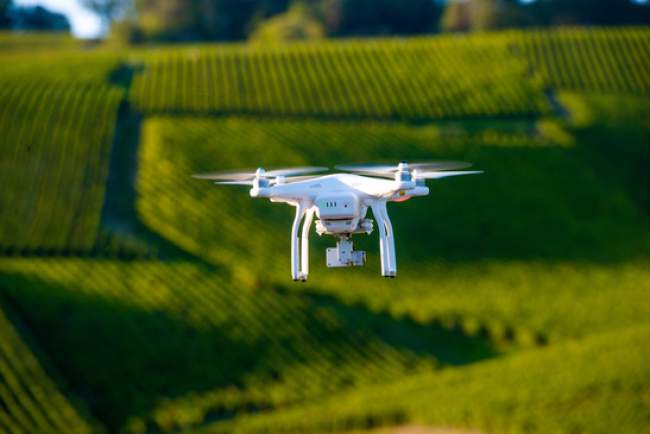
Farm industry lobbyists have continued to lobby the White House for the importation of more foreign labor for agribusiness. Most recently, Agriculture secretary Sonny Perdue sent a top aide to lobby Jared Kushner to ensure that any new immigration bills coming out of the White House are sufficiently favorable to farmers.
However, these lobbying efforts give the false impression that American farmers face a binary choice: more guestworkers, or economic hardship. Completely absent from these discussions is a third option – increasing mechanization and automation of the most labor-intensive aspects of farming.
I will begin publishing a semi-regular series of blog posts highlighting some of the major new technologies in the agricultural pipeline.
Up first: unmanned drones.
PricewaterhouseCoopers (PwC) estimates that there is a $32.4 billion market for unmanned drones in agriculture. Technology Review noted six primary ways that agricultural drones could be used throughout the crop cycle:
- Soil and field analysis
- Planting
- Crop spraying
- Crop monitoring
- Irrigation
- Health assessment
Because drones can instantly produce 3-D maps of large swaths of land, they can be instrumental at the beginning, middle, and end of the crop cycle. In the beginning, the primary purpose is related to planting – the drones can analyze the soil to determine planting patterns, and then actually shoot the pods directly into the soil much more efficiently than traditional machinery.
Using that same detection technology, drones then can scan the ground, monitor the crops, and determine the amount of liquid needed by each crop, something which is normally done manually with much heavier machinery.
At the end of the crop cycle, drones can determine how healthy each crop is, and when it is done growing based on its relative density and heat. In other words, fleets of unmanned drones do not just serve a single purpose like most other machinery – rather, they perform a range of functions across the crop cycle, significantly cutting down on labor needs at each stage.
One of the most promising start-ups working on agricultural drone technology is American Robotics, which was founded in 2016. It is developing a fleet of fully autonomous, self-charging, cloud-connected farm drones which can perform many of the above functions.
The company is offering trials to farms in which they install one of the start-up's DB-1 Drone Stations, from which point the weatherproof drones operate independently. Farms pay for the drones as a service on an annual subscription basis, meaning all the hardware and software is included.
As of this summer, the drones were deployed in a series of pilot tests at co-ops and manufacturers across the country, and the company currently plans a limited roll-out in 2019 for some of the companies on its growing waitlist.
Other drones are already further along in development. PrecisionHawk is a drone company serving a range of industries. Its farm drones produce elevation maps, crop health analysis, plant counts, and prescription maps, and it offers drones on demand as well as drone consulting services. DroneSeed has produced the first FAA approved s warms for spraying, and only FAA approved drones for heavy agricultural lifting.
While much of this technology is still in its relatively early stages, rollouts are underway and seed funding continues to pour in.
As Mark Krikorian, the Center's executive director, noted in an op-ed earlier this month, perhaps rather than offer farmers more guestworkers to handle increasingly automated tasks, we should be offering them a robot in every field via subsidies. In the long-term, the farmers may well be better off.
